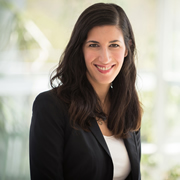Leigh Wilton
Who are you? Your name, department, what you teach, your FYE topic, etc.
My name is Leigh Wilton, and I’m a professor in the Department of Psychology here at Skidmore. I am a social psychologist, and I study and teach about how people influence and shape others across different social situations. In particular, I study how a race and gender shape our identity, experiences, and expectations of others, both in groups and as individuals. Race is central to all our lives – it shapes our identity, experiences, and life chances.
Why Kendi? What makes this text so important? Why choose it as the FYE reading?
This year, I was a part of the committee that chose the summer reading book – How to Be an Antiracist, by Ibram X. Kendi. In the United States, there have been several nationally prominent events that have centered race in our national dialogues about policing, justice, and identity – events or movements such as Black Lives Matter, the deaths of Black Americans like Breonna Taylor and George Floyd, and violence directed at Asian individuals – and sadly, these are not merely recent happenings.
One of our collective goals in selecting this year’s summer reading was to engage community members to lean into the necessary and hard work of anti-racist action, and to have a text that could provide us with a common language for learning and talking about race, racism, anti-racism, and many related constructs.
Open the book up for students -- how should they approach it? What questions, goals, etc., should they bring to it?
I would encourage students to approach the book with openness, vulnerability, and willingness to learn.
I would encourage students to think about what race is and isn’t – race actually isn’t supported by science – there is no genetic concept of race – so it is a socially constructed idea of human hierarchy.
I would encourage students to think about how racism isn’t just about having negative thoughts about people or groups – it’s also structural, and embedded in a lot of systems and organizations.
I would encourage students to think about the range of experiences we all have connected to our racial identities – and how it’s connected to other identities like our gender or sexuality.
Thanks – and I hope you enjoy – or at least are challenged by – this year’s summer reading.
